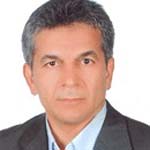Digital modeling and prediction of soil subgroup classes using deep learning approach in a part of arid and semi-arid lands of Qazvin Plain
Soil class maps contain useful information that helps stakeholders to understand soil behavior in response to different management programs. As well as, their numerical prediction is dependent on the appropriate scale of environmental variables. Therefore, the current research intends to use the deep learning approach (CNN) and the spatial information of geomorphometric attributes and the sentinel 1/2 satellite images along with band ratios to predict the soil subgroup classes with its uncertainty map. Also, comparing the results of CNN and the random forest (RF) model in prediction of soil classes and different environmental variables was not well documented.
CNN model was runed in the Google Collaboratory online environment and the RF model was performed by the "rf" function in the "caret" package in the RStudio environment. The models were calibrated with 80% of the data set along with six different window sizes and validated according to 20% of rest data based on two indices of overall accuracy (OA) and F1-Score.
Six covariates i.e., DEM, SWI, WE, SH, MRVBF, DIFF were selected as the most effective variables among 33 geomorphometric attributs, with 12 individual bands and the indices of sentinel 1/2. Totally, 13 soil subgroups including nine from Aridisols, three Inceptisols subgroups and, one Entisols subgroup are recognized in the study area. The overall accuracy for two models with a slightly difference of 7% in the window size (15*15) was observed with 43% and 50% for CNN and RF models, respectively. The CNN model has three patterns (increasing-decreasing), small and large optimal window size, and the same pattern observed in the scaled RF model, too. The OA was zero in all window sizes for the Sodic Xeric Calcigypsids subgroup in the CNN model and the Xeric Calcigypsids, and Typic Xerorthents subgroups in the RF model. In addition, the Xeric Haplocalcids and Xeric Haplogypsids only predicted by the RF model in 3*3 and 5*5 window size, respectively. By increasing the window size from three to nine, and 15, the Typic Calcixerepts shows a mild increasing trend in the F1-Score and also a mild decreasing trend after reaching the peak. The amount of F1-score for Typic Calcixerepts in CNN and RF models was 69% and 77%, respectively. The F1-Score values of Gypsic Aquisalids and Xeric Haplogypsids increase by 30% and 17%, by increasing the window size from three to five, and immediately a sharp downward trend, which indicates the appropriateness of the small window size in order to predict.
In general, despite the limited number of observation profiles (n=278), the CNN model provides an acceptable prediction in mapping the soil subgroup classes, and although a slight difference in the overall accuracy with the RF model, while, the CNN presents a lower uncertainty map in comparison to RF. In future studies, this model and its procedure can be used to predict soil class maps in other arid and semi-arid regions.
-
Assessment of environmental indices for soil lead contamination in a part of Shahr-e-Ray, Tehran Province
Shahla Rahmani Siyalarz, Ali Keshavarzi *, , Mohsen Farahbakhsh
Iranian Journal of Soil and Water Research, -
Investigating soil grouping using conventional and modern clustering models in some parts of Qazvin plain
Zahra Rasaei, *, Azam Jafari
Iranian Journal of Soil and Water Research,



